


Winners: LACDA
JURIED COMPETITION
Eunjung Hwang
Juried Competition Winners Show
Jan 10 - Feb 1, 2008
Reception Thursday Jan 10, 7-9pm
Congratulations to all of our entrants to the LACDA Juried Competition. You have all made excellent contributions to the pioneering field of digital art and have made art history by participating in a new area of creativity and a new kind of competition.
There were so many outstanding artists of all kinds from around the globe that it was very difficult to choose our winners. We endeavored to select winners that each represented the best of a variety of disciplines, cultures and geographical locations. In this regard we decided to select ten second place winners (as opposed to five) to more fairly represent all who entered.
Curators Statements:
The pervasiveness not just of computers, but of digital media, is the defining factor of early 21st-century life. As with many other technological revolutions of the modern era, from the printing press to the camera, this one came up behind all but a few of us and bit us hard, and we’ve all been scrambling to keep pace since, with various degrees of success. This is no less true of artists than of the rest of us, but artists adapt differently – in some ways more readily, in some ways less – than the rest of us do. The main advantage artists have is the ability to approach the digital world as a new toolshed; and the main problem they can suffer is getting trapped in that toolshed, prisoners rather than masters of a technological paradigm. This has been apparent since the 1950s, when the first “digital art” was realized. Of course, back then the process was so laborious that an artist had to surrender to the tools, and the electronic mystique was likely to swallow the technique-obsessed creator. (This was less true of, say, musicians than of visual or verbal artists, but that’s another story.) With the advent of personal computers in the 1980s, and the rapid sophistication gained since by both digital machines and their operators, the genre of “digital art” has become less and less omphaloskeptic on the one hand, and less and less self-consciously art-historical on the other.
In judging this competition, we looked for work that, among other things, transcended as much as possible the self-reflexive fallacy that has weighed on digitally produced art for so long – but at the same time we looked for work that could only have been produced with digital means. Sometimes that simply meant images that seemed skillfully Photoshopped; other times that meant images that resulted from an intricate crossplay of algorithms manifesting the intersection of diverse concerns. We presumed technical virtuosity, we did not seek it; what we sought was distinctive vision brought to full expression through – and often because of – digital means.
Peter Frank
Senior Curator, Art critic
Riverside Art Museum, Angeleno Magazine and LA Weekly
A prime ideal of much modern art was for the art work to be "honest" about its material: much of the most radical painting of the modern period – Cubism, Futurism, Abstract Expressionism, Pop, for example – was hardly illusionistic, but unabashedly announced itself as paint applied to a surface. Digital art in the twenty-first century, however, is a shifty chameleon. Among the many works submitted for consideration by the jurors for this project were digitally-generated imagery that mimics painting of almost any style; paintings that were scanned as digital files sometimes manipulated, sometimes not, and subsequently printed by digital technology; abstract visual compositions systemically generated by musical notations, algorithms or other electronic programs; pictures punched up by elaborate special effects; straightforward "straight" photography that happens to have been recorded or printed by digital means; and bizarre surrealistic fantasies that could not be further from such photographic reportage. Through it all, our intent was not to privilege one strain of digital practice or another but, rather, to embrace the full spectrum – and the inherent conceptual contests and contradictions – that animate the practice and discourse of new media, making it so vital for so many artists working in the international art world today.
Howard N. Fox
Curator of Contemporary Art
Los Angeles County Museum of Art
Our first place winner is:
Eunjung Hwang
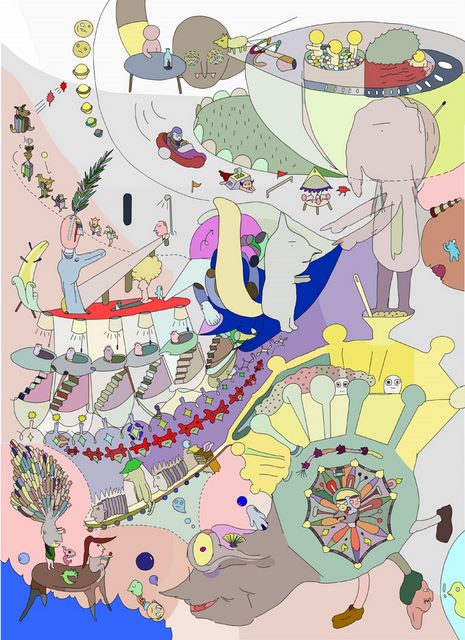
Eunjung Hwang presents her series "The Reversible Fates of Future Creatures." She creates what look like amusement park maps filled with the intwined and variously "fated" multitudes involved with the mechanistally propelled and industrial "future." As the title indicates, her work portends a possible future that is a more sane and constructive alternative. Her odd and capricious sensibility is both amusing in its imagery and astonishing in its form in terms of line, color, shape and composition. The execution of her sophisticated, yet childlike, illustrative style using digital means is a supurb example of an artists use of computers to extend and refine her technique.
Our ten second place winners are:
Rachel Bruya Walker
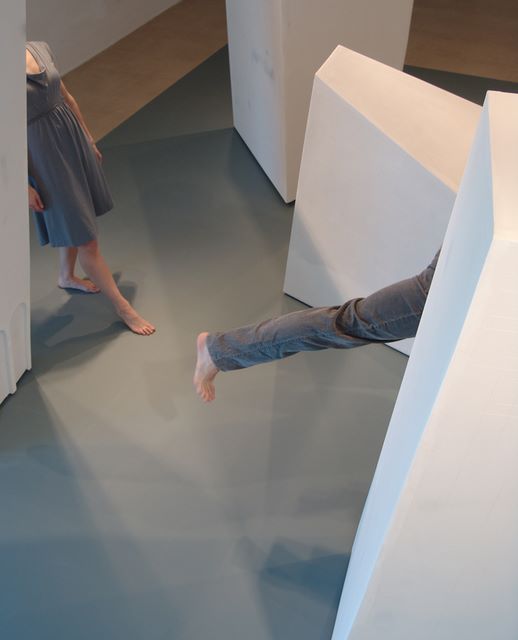
Beautifully construed photographic images that use architecture and human forms to express how we "confuse interior with exterior spaces." The figures entering and exiting the frame express a transcendent sense of continual "moving and changing..becoming something else."
David DiMichele
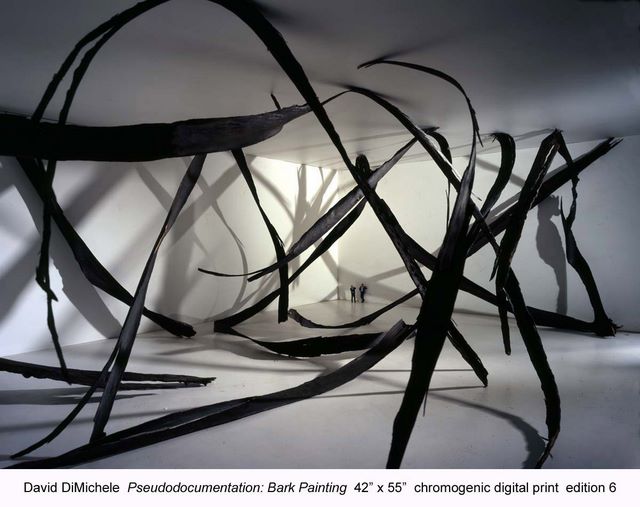
Benedikt Gross
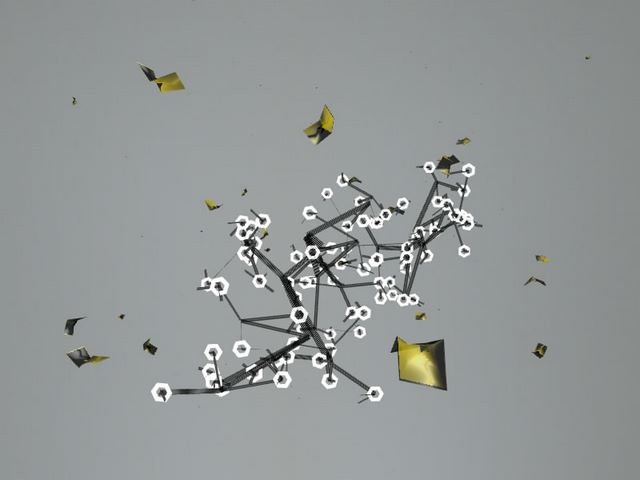
Abstract visual compositions systemically generated by musical notations.
Steve Luke Hanson
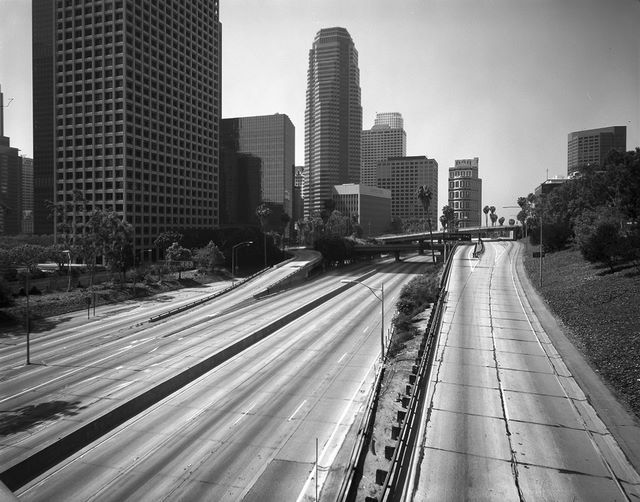
Photographic images of freeways where the cars have been meticulously removed.
Melissa Ann Lambert

Employing an arsenal of digital tools, Melissa Lambert mines a hallucinatory territory embedded with personal codes and signals that lend her dizzying, pixelated surfaces unusual depth.
Linda Levinson
Images that resonate the sensation of touch through the sense of sight. Her method is to bring the scanner to the object to create a quality of visual tactility that cannot be described by the use of a camera.
Marianne Magne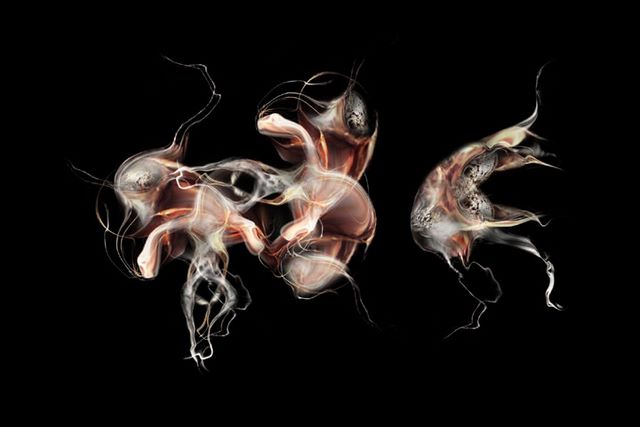
Mairanne Magne uses drawing and digital distortion to create imaginary microcosms. Borrowing from biological mecanisms her works evolve organically, splitting from the "cellular" level to more complex forms.
Paho Mann
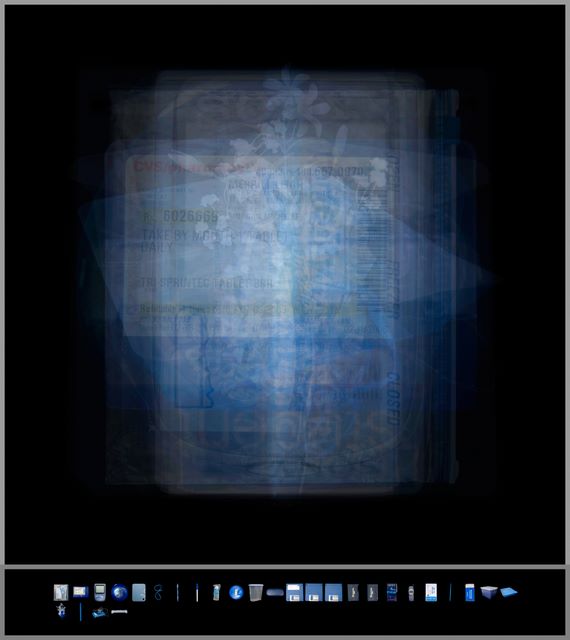
Net generated stills. "I created a photographic taxonomy of all the objects in the apartment that I share with my partner, Leigh. These images have been compiled into a database and given keywords from categories ranging from personal to political. Users can sort the images by one or more keywords allowing them to see what Leigh and I own and compare our objects to their objects."
Hector Mata
A series of diptychs, where the artist combines black and white landscape or portrait photos with color photos of objects that illegal immigrants have left in the desert on their way into the US.
David Powell
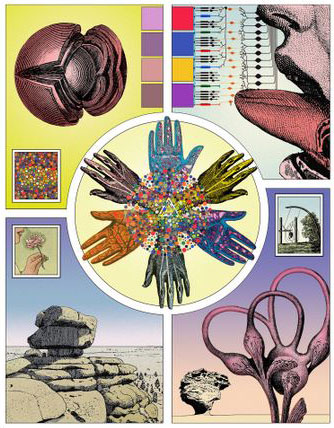
His latest body of work investigates the intersection of various scientific disciplines with the representation of humankind. He looks at the physicality of the body and mind, as well as manifestations of the ineffable and mysterious. Though their didactic format is often that of classic textbook illustrations, his works make no pretense of being explications of rational theories of mind and body.
|
|